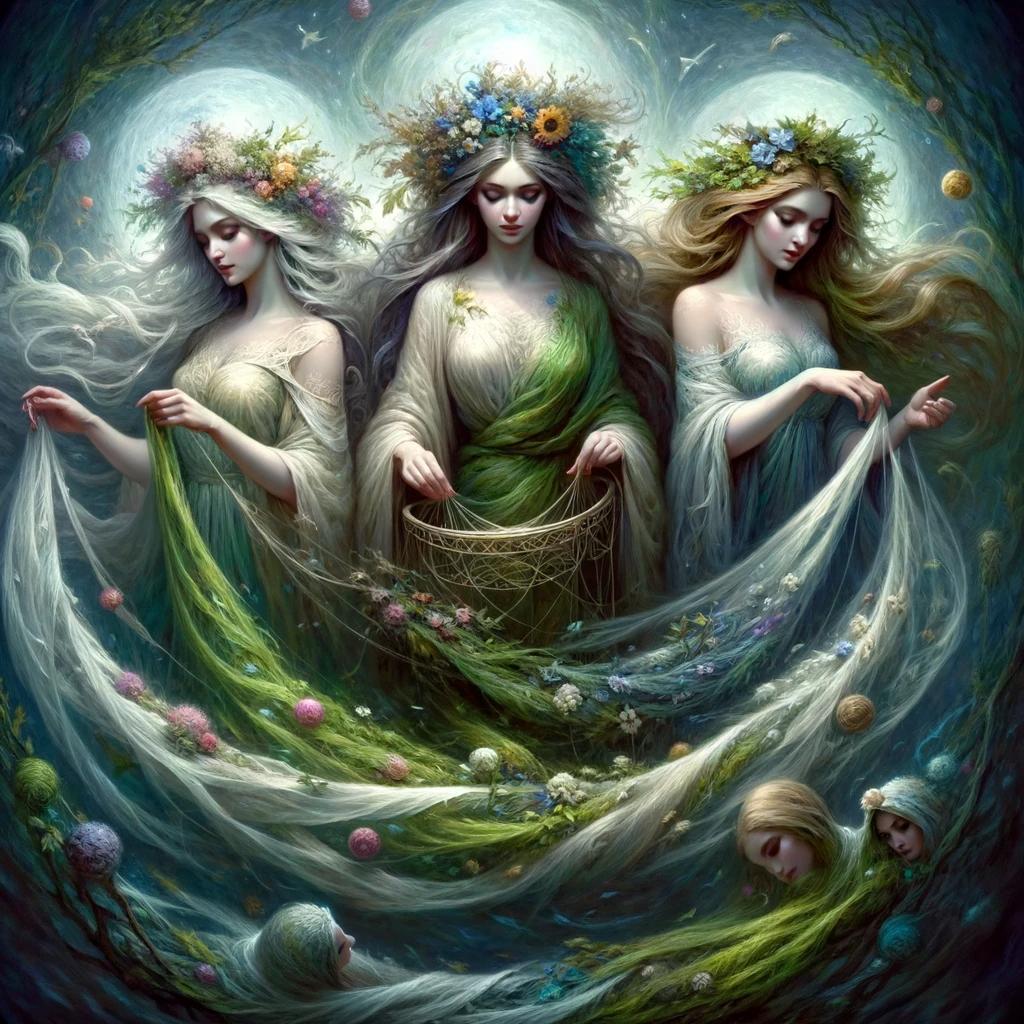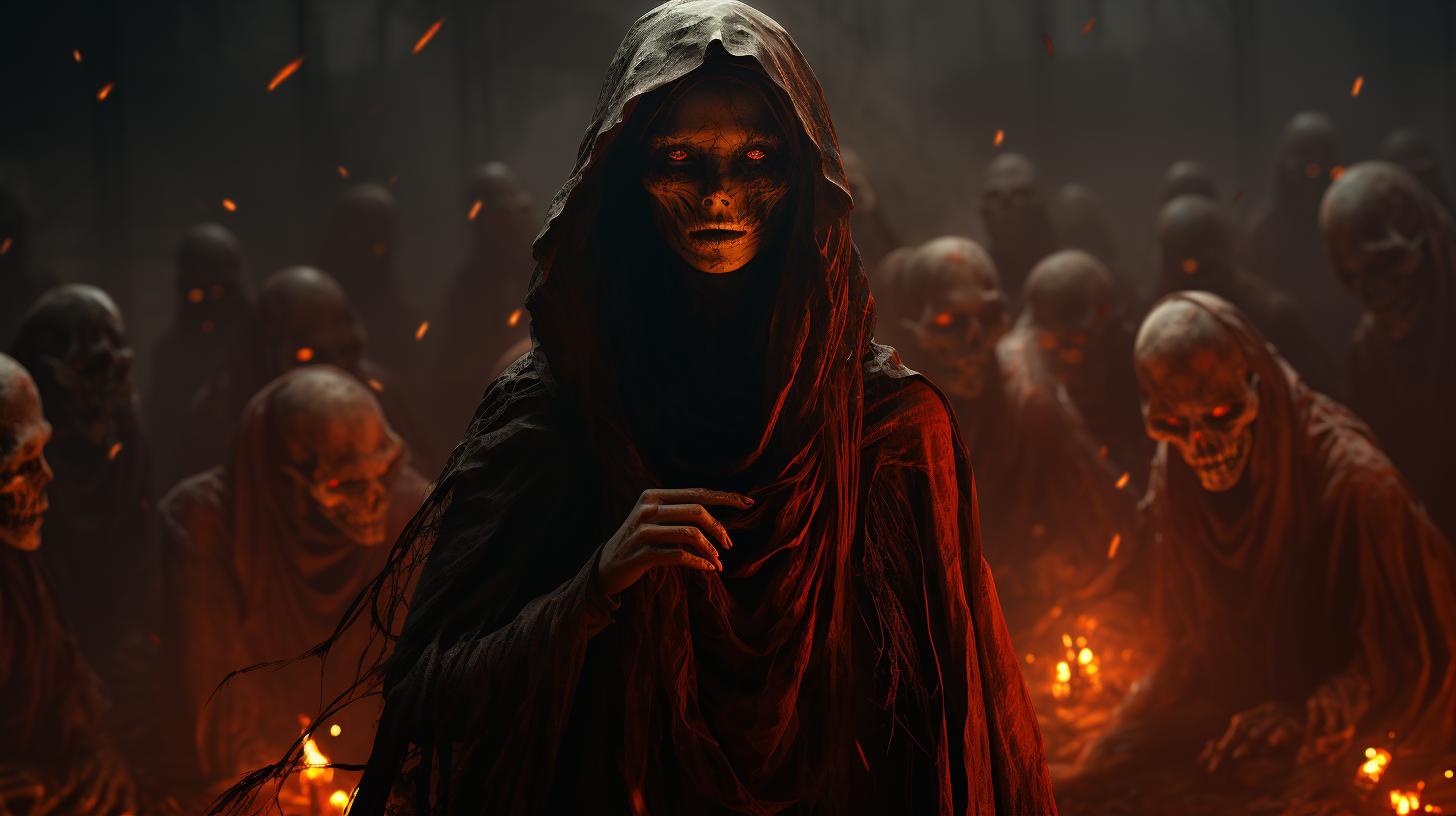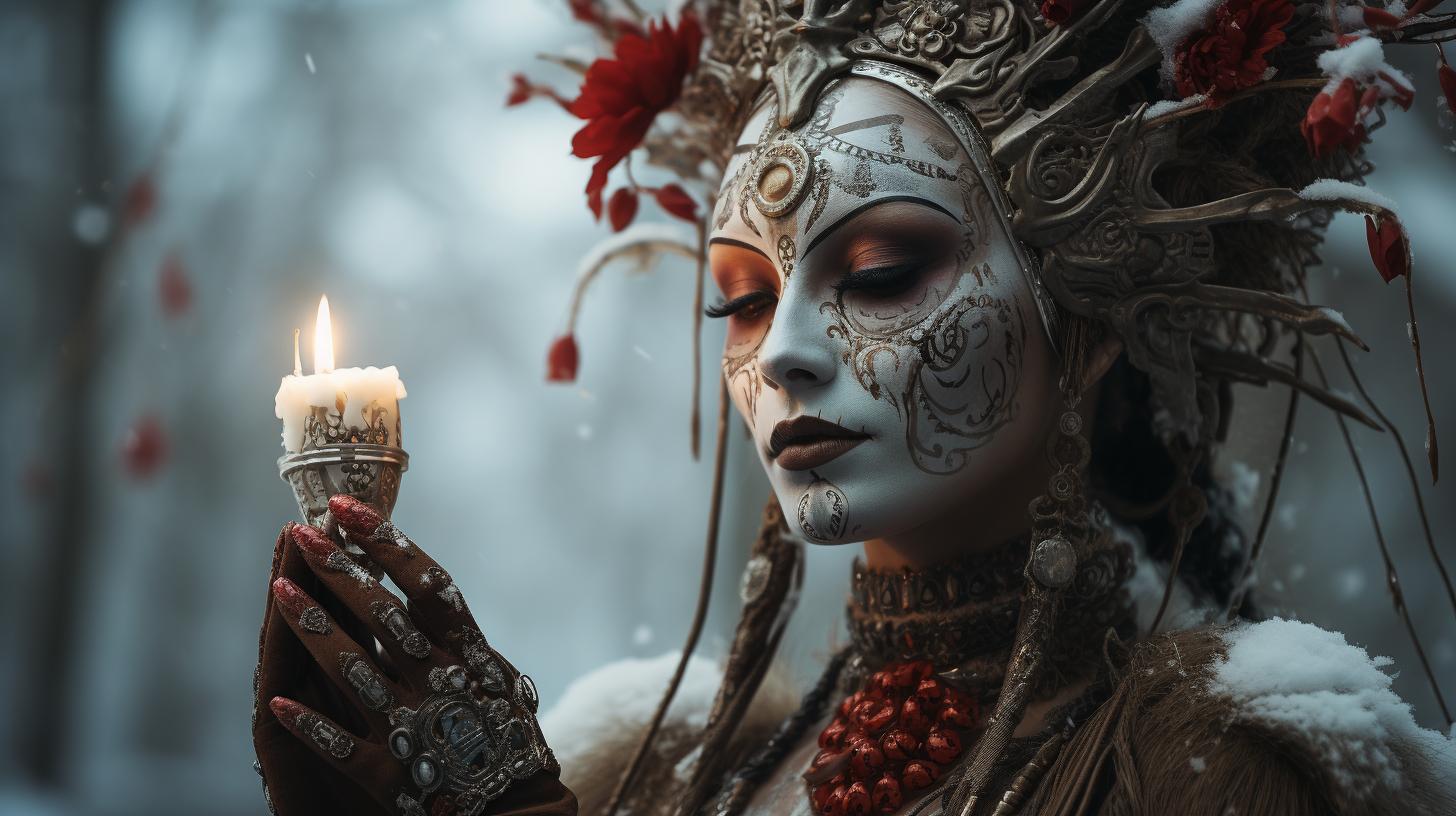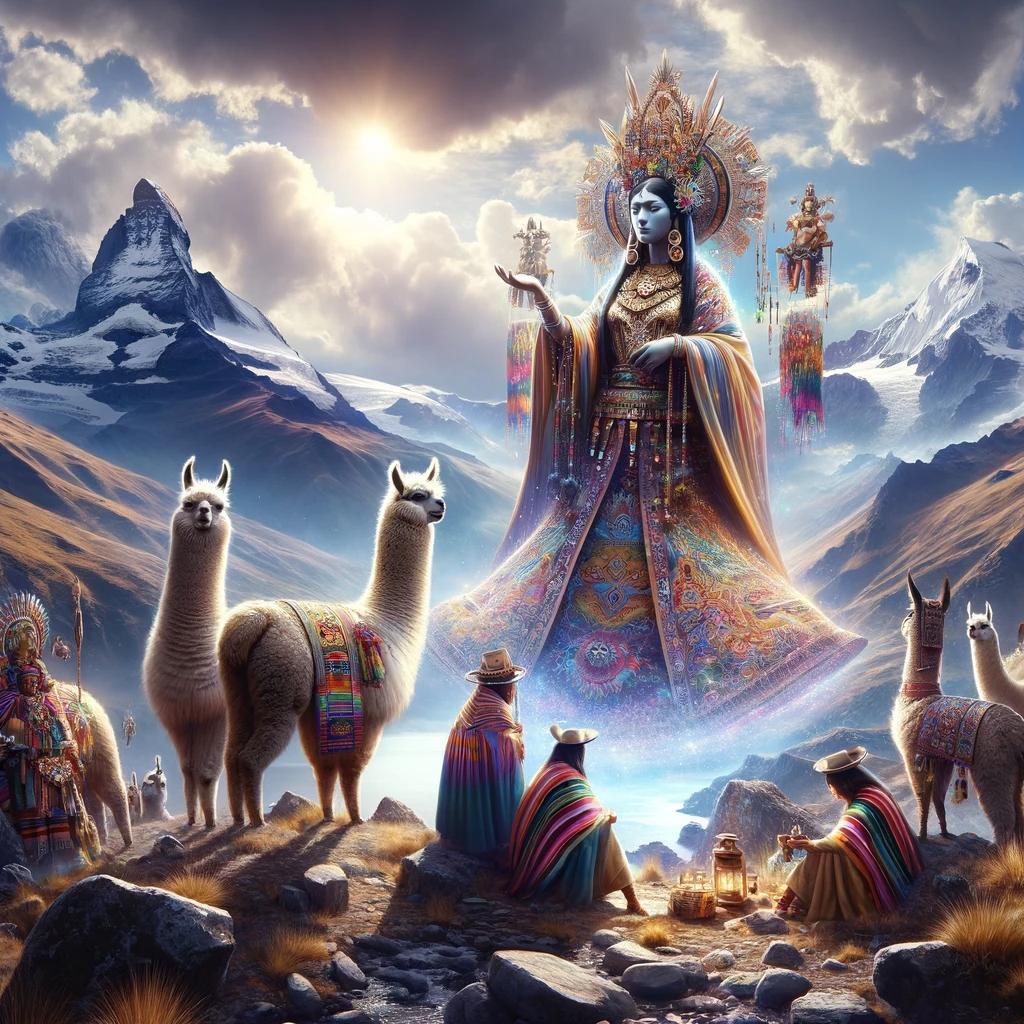Likho: The Ominous Figure of Slavic Mythology
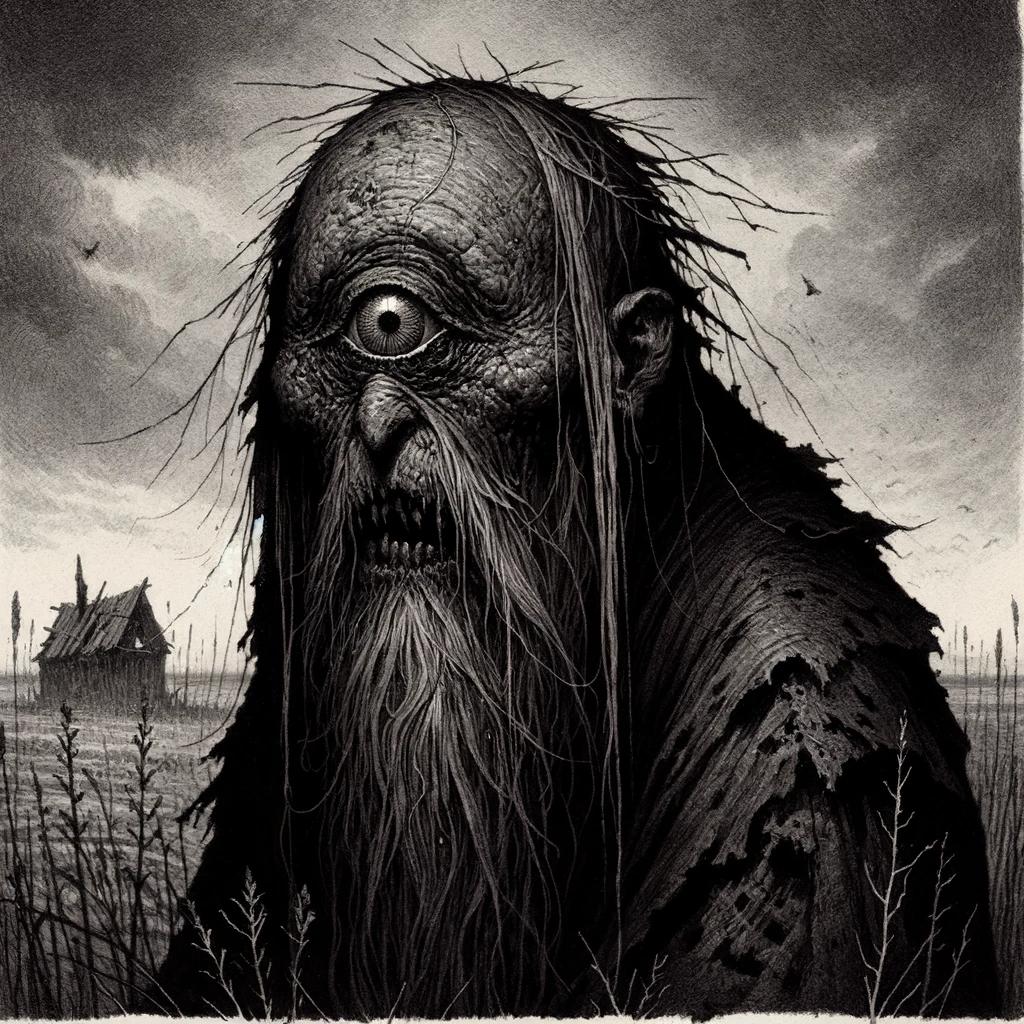
Likho, a pivotal figure in Slavic mythology, represents a significant element of ancient Slavic beliefs, often depicted as the embodiment of evil and misfortune. This mythical character, usually portrayed with a single eye, embodies dark attributes and was historically seen as the harbinger of death during epidemic outbreaks.
Likho’s presence is frequently associated with tragic accidental drownings, where the victims, overcome by a mysterious force, struggle to escape its grasp. Such tales of Likho carry profound symbolic meanings and life lessons, illustrating the rich cultural heritage and the complex interplay of fate and adversity within Slavic mythology.
Likho is not alone in its association with misfortune in Slavic lore; figures like Likhoradka and Milosnice also play pivotal roles in these mythological narratives. Discover the depths of Likho’s influence in Slavic culture and belief systems.
The Origins and Evolution of Likho in Slavic Mythology
The pantheon of Slavic mythology features a diverse array of characters, with Likho standing out as a quintessential symbol of evil and misfortune. Known also as licho or liho in Eastern Slavic tales, Likho is manifested in various forms throughout the folklore.
Whether depicted as a mischievous goblin, a skinny old woman dressed in black, or a towering giant with one eye, each portrayal of Likho is characterized by its distinctive one-eyed appearance, signifying its unique mythological role.
Likho: A Symbol of Evil and Misfortune
Likho personifies malevolence and ill fate in Slavic mythology. Its sinister influence is evident across numerous tales where it lurks in the shadows, wreaking havoc and spreading misery among those it encounters.
The enduring reputation of Likho as a bringer of bad luck and disaster is deeply embedded in the folklore, reflecting centuries-old traditions of storytelling in Russian and Slavic cultures.
Visual and Symbolic Representations of Likho
The depiction of Likho varies across Slavic folklore, reflecting the cultural nuances and interpretations of this mythical entity.
Whether as a cunning trickster or as an emaciated old woman, clad in somber black garments, the visual symbolism of Likho serves as a cautionary tale about the lurking dangers and the perpetual struggle between good and evil inherent in Slavic mythology.
Likho and the Rituals of Ancient Beliefs
In ancient Slavic beliefs, Likho was often considered a servant of death, closely linked with the themes of mortality and misfortune.
During times of epidemics, rituals were conducted in Slavic villages involving the creation of effigies resembling Likho, complete with its characteristic single eye.
Likho in Slavic Fairy Tales: A Catalyst of Tragedy
In the realm of Slavic folklore, Likho, known as “the personification of evil and misfortune,” is prominently featured, especially in stories involving tragic water-related accidents. These tales often involve water spirits such as the rusalka and vodyanoy, enhancing the eerie atmosphere surrounding Likho’s malevolent acts.
The narratives describe how Likho clutches onto its victims’ necks, rendering them helpless. In a desperate bid to rid themselves of Likho, afflicted individuals often leap into rivers or lakes, hoping to drown the malevolent spirit and secure their freedom.
Tragically, this act often leads to their own demise, a stark reminder of the perilous influence of Likho.
The Menacing Presence of Likho in Tragic Tales
Likho’s connection to tragic drownings underscores its ominous nature. Through these narratives, Likho serves as a grim reminder of the constant dangers and the harsh consequences of succumbing to negative forces.
The tales serve as cautionary advice, emphasizing the importance of vigilance and resilience in the face of adversity.
The Method and Impact of Likho’s Attacks
The method of Likho’s attack, often highlighted in Slavic fairy tales, illustrates its ability to dominate and subdue its victims. By latching onto their necks, Likho ensures that escape is nearly impossible.
These portrayals emphasize the inner conflicts and the extreme measures individuals might resort to, in an effort to escape the clutches of such a powerful adversary.
Regrettably, these attempts frequently result in self-inflicted harm or unintended tragedies, further cementing Likho’s reputation as a harbinger of doom.
Encounters Between Likho and Folk Heroes
Slavic folklore is filled with stories of encounters between Likho and various protagonists, often leading to dire outcomes. One notable tale involves a virtuous tailor and a blacksmith who unwittingly cross paths with Likho.
In a grim turn of events, Likho kills the tailor and gruesomely cooks his body in front of the blacksmith. In a desperate bid for survival, the blacksmith uses his skills to blind Likho’s single eye with a hot iron, ultimately escaping the malevolent spirit’s grasp.
- Likho’s role in tragic accidental drownings
- The unique methods of Likho’s attacks and their consequences
- Dramatic encounters between Likho and heroic figures in Slavic tales
Interpreting Likho’s Varied Tales: Tragedy and Symbolism
The stories of Likho in Slavic mythology offer various endings, each infused with its own set of tragic and symbolic elements.
These narratives not only captivate the imagination but also invite reflection on the deeper meanings and lessons inherent in these ancient myths.
Likho’s Fate in Different Versions of the Stories
In the different versions of Likho’s tales, his fate takes on various outcomes.
Some stories depict Likho capturing the protagonist, leading to a tragic end. In another variation, Likho meets his own demise while attempting to drown the hero, symbolizing evil fate and misfortune.
These differing endings add depth to the narrative and reflect the unpredictable nature of life and the consequences of one’s actions.
Symbolism and Life Lessons in Likho’s Tales
Symbolism plays a significant role in Likho’s tales, offering profound life lessons to the readers. The presence of Likho represents the inherent struggles of humanity and the capacity for evil within individuals.
Each encounter with Likho and the choices made by the characters symbolize the complexities of facing adversity and the importance of resilience and courage in the face of dark forces.
Comparisons with Greek Mythology: Likho and the Cyclops
There are intriguing parallels between Likho and the Cyclops in Greek mythology.
Both figures are characterized by having only one eye, embodying a sense of uniqueness and otherworldliness. While they possess different roles and characteristics, the comparison highlights the influences and shared themes within mythology across cultures and time periods, reflecting aspects of myth and legend.
- Likho’s tales offer insights into the unpredictable nature of life and the consequences of one’s actions.
- Symbolism in Likho’s stories provides profound life lessons, emphasizing the importance of resilience and courage in the face of adversity.
- Comparisons with Greek mythology draw intriguing parallels between Likho and the Cyclops, showcasing the interconnectedness of mythological themes.
The various endings to Likho’s tales captivate and provoke contemplation, reminding us of the intricate nature of human existence and the moral lessons embedded within these ancient narratives.
Other Figures in Slavic Mythology associated with Illness
Likhoradka: the Female Spirit of Sickness and Body Possession
In Slavic mythology, Likhoradka is a female spirit believed to be responsible for causing sickness and possessing the bodies of individuals. Likhoradka’s presence brings about illnesses that plague communities, leading to the suffering of those affected.
This spirit is often portrayed as a mysterious and elusive figure, preying on vulnerable individuals and inflicting ailments upon them. Likhoradka’s role in Slavic mythology serves as a cautionary tale about the consequences of succumbing to illness and the importance of maintaining good health.
Milosnice: the Mysterious Spirits Bringing Diseases to Regions
Milosnice are enigmatic spirits in Slavic mythology associated with bringing diseases to specific regions. They are regarded with fear and avoidance by the Serbian people, who refrain from directly mentioning their name.
These malicious spirits are believed to have the power to spread sickness and afflict communities with epidemics. The mere mention of Milosnice’s name is said to invite their presence and the subsequent outbreak of illness.
The tales surrounding Milosnice serve as a reminder of the destructive powers of disease and the need for vigilance in protecting oneself and the community against them.
- Likhoradka is a female spirit responsible for causing sickness and possessing bodies
- Milosnice are mysterious spirits associated with spreading diseases to specific regions
- Likhoradka’s presence brings about illnesses and emphasizes the importance of good health
- Milosnice are feared and avoided due to their ability to spread epidemics
- Both Likhoradka and Milosnice serve as cautionary figures in Slavic mythology
Likho’s Impact on Slavic Culture and Belief Systems
The presence of Likho in Slavic mythology has left a lasting impact on the culture and belief systems of the region.
Likho’s stories have shaped rituals and beliefs aimed at warding off misfortune and protecting against the influence of this malevolent entity.
Rituals and Beliefs to Ward off Likho and Misfortune
Slavic communities developed various rituals and beliefs to protect themselves from Likho’s influence and prevent misfortune. These practices often involved invoking the help of protective spirits, performing cleansing ceremonies, or using specific talismans and charms.
These traditions aimed to create a barrier against Likho and ensure a more positive fate for individuals and communities.
Likho’s Evolution from Servant of Death to Symbol of Bad Luck
Likho’s role has transformed over time, evolving from being associated with serving death during epidemics to becoming a symbol of general bad luck.
Likho’s depiction as an embodiment of evil and misfortune has made it a cautionary figure in Slavic folklore, warning individuals of the consequences of delving into darkness and seeking ill-intentioned actions.
Lessons and Teachings from Slavic Mythology about Likho
The tales featuring Likho in Slavic mythology convey important lessons and teachings. Likho serves as a reminder of the consequences that can arise from engaging in malevolence or seeking personal gain at the expense of others.
Likho’s presence in these stories emphasizes the significance of living a virtuous and compassionate life, as well as the importance of facing adversity with resilience and wisdom.
.
.












